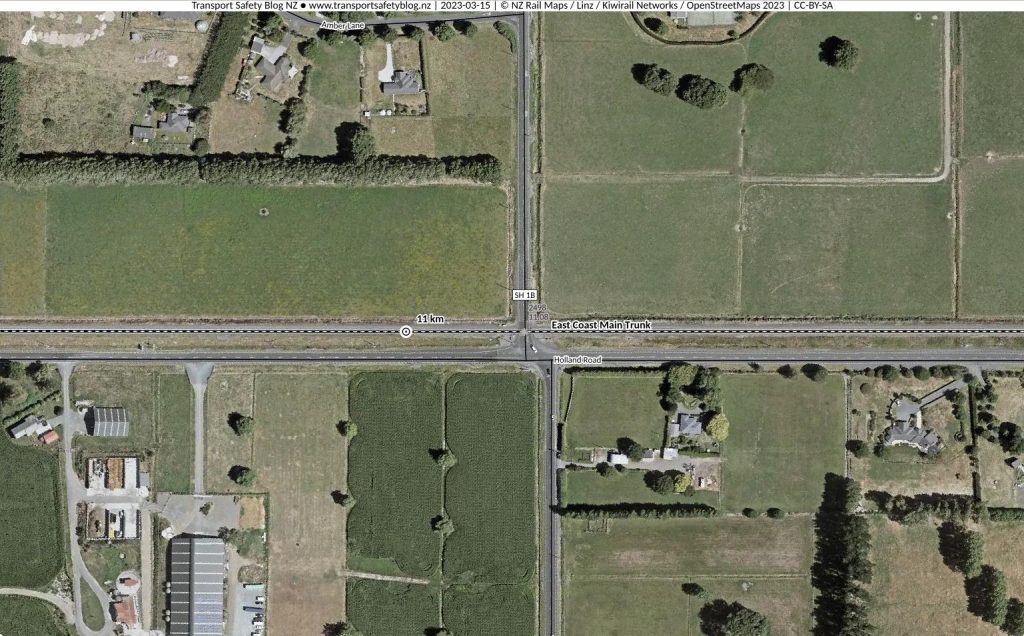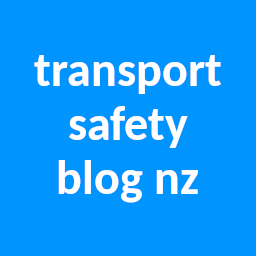
The saga of the Telephone Road level crossing at Puketaha and at 11.08 km track distance from Frankton on the East Coast Main Trunk Railway is continuing since Waka Kotahi produced its conclusion on 14th March that the crossing should be closed. As part of that process, WK attached a report produced for them by WSP (Opus as we used to know them, and before that Works Consultancy Services, and before that the Ministry of Works) that evaluated possible options for fixing the railway crossing and intersection. It turns out, just in passing, that the road intersection there, between Telephone Road, Holland Road and Marshmeadow Road, was rated several years ago as the 9th most dangerous intersection in New Zealand. Not the 9th most dangerous in Waikato District, but the 9th most dangerous in the whole of New Zealand. So let that sink in for a bit. Let’s say that would create a large conflict of interest for Waka Kotahi, who would be highly motivated to make the intersection less dangerous by chopping off the leg across the railway line as this is a very classic example seen all over the country where a level crossing is too close to a road for good traffic safety. In other words the issues for this intersection are a combination of problems compounded by the level crossing, or to put it another way, some of the issues come down to involving both the level crossing and the road intersection.
What we find on looking at the report is that grade separation of this crossing is completely eliminated from consideration. The long list of options listed as one entry a “bridge or tunnel” which was claimed to fail both of Kiwirail’s primary safety criteria (eliminating grounding and short stacking on the crossing, both of them caused by the road). Anyone who knows what a grade separated crossing looks like (there are actually higher proportion of them on the ECMT than any other major line) can see immediately that a grade separation, either by taking the road over or under the railway line, would tick both boxes for Kiwirail safety concerns by eliminating the crossing completely. But in the WSP report, all we have is four words “not appropriate for context” without actually bothering to assess the option further, in addition to the major errors in safety criteria assessment.
As noted above, grade separation is relatively common on the ECMT. This is because one part of it was constructed during the 1920s when the government had a particular focus on grade separation resulting in numerous new lines around the country from that time having bridges over or under railway lines built from new as a matter of course. In the 1970s, the Kaimai Deviation added 25 km of new track to the ECMT and repeated the grade separation focus from 50 years prior. There are no public level crossings on the deviation and in a sparsely populated rural area that 25 km contains no fewer than 10 grade separated crossings, both private and public. And all of this on a predominantly single track line. WSP’s report is stupid and ignorant to rule out grade separation which should have made it into the shortlist of options to be evaluated further. The main challenges then are the cost of a bridge and for WK, the extra factor that it would not address the dangerous intersection which would need additional measures. However, the fact is the railway cannot be held responsible for poor road design and the cheapest option that WK clearly prefers, closing the crossing, is unpopular in the local community and would create a lengthy 9 km distance between public crossing points which is way too long a distance for an area with increasing population due to its proximity to Hamilton City.
